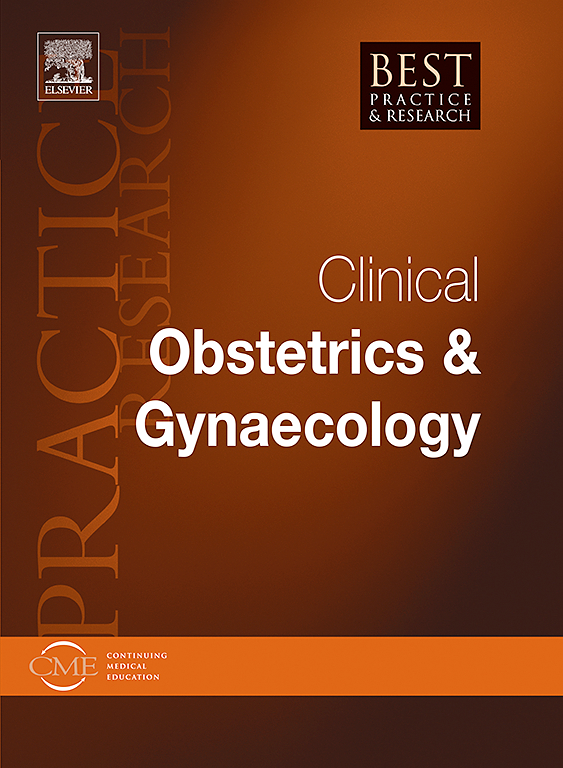体外产内治疗(EXIT)的决策及手术考虑
IF 4.1
2区 医学
Q1 OBSTETRICS & GYNECOLOGY
Best Practice & Research Clinical Obstetrics & Gynaecology
Pub Date : 2025-07-25
DOI:10.1016/j.bpobgyn.2025.102649
引用次数: 0
摘要
子宫外娩出治疗(EXIT)是一种用于胎儿畸形的分娩方法,胎儿畸形可能导致呼吸或心血管疾病,并过渡到子宫外生活。在多学科合作下,分娩时子宫放松以保持胎盘功能,在维持母胎界面的同时允许适当的干预。文献中描述了多种类型的退出程序,这些程序根据胎儿指征和特定临床目标而有所不同。这些包括出口到气道、出口到切除、出口到体外膜氧合(ECMO)和出口到心室起搏。当考虑退出程序时,必须权衡胎儿的利益与母亲的风险,患者需要彻底的咨询做出明智的决定。在许多情况下,个性化的方法是必要的。本综述的目的是概述产前评估、风险分层和各种形式的EXIT程序所需的技术规划。本文章由计算机程序翻译,如有差异,请以英文原文为准。
Decision-making and operative considerations for Ex-utero Intrapartum treatment (EXIT)
The Ex-Utero Intrapartum Treatment (EXIT) is a method of delivery utilized in the setting of fetal anomalies that can lead to respiratory or cardiovascular compromise with the transition to extrauterine life. With multidisciplinary collaboration, delivery occurs with uterine relaxation to preserve placental function, allowing for appropriate intervention while the maternofetal interface is maintained. Multiple types of EXIT procedures are described in the literature that differ based on fetal indication and specific clinical goals. These include EXIT-to-airway, EXIT-to-resection, EXIT-to-extracorporeal membrane oxygenation (ECMO), and EXIT-to-ventricular pacing. When considering an EXIT procedure, fetal benefit must be weighed against maternal risk, and patients require thorough counseling to make an informed decision. In many cases, an individualized approach is necessary. The goal of this review is to provide an overview of the prenatal evaluation, risk stratification, and technical planning necessary for the various forms of EXIT procedures.
求助全文
通过发布文献求助,成功后即可免费获取论文全文。
去求助
来源期刊
CiteScore
9.40
自引率
1.80%
发文量
113
审稿时长
54 days
期刊介绍:
In practical paperback format, each 200 page topic-based issue of Best Practice & Research Clinical Obstetrics & Gynaecology will provide a comprehensive review of current clinical practice and thinking within the specialties of obstetrics and gynaecology.
All chapters take the form of practical, evidence-based reviews that seek to address key clinical issues of diagnosis, treatment and patient management.
Each issue follows a problem-orientated approach that focuses on the key questions to be addressed, clearly defining what is known and not known. Management will be described in practical terms so that it can be applied to the individual patient.

 求助内容:
求助内容: 应助结果提醒方式:
应助结果提醒方式:


